Construction projects are complex. Realistically, no individual construction contractor has all of the specialized skills that are needed and, even if they did, it’d be impossible to do all the work themselves. This is why they need a subcontractor for each specific area of construction work.
What Is Subcontracting in Construction?
Subcontracting is the process in which a construction general contractor hires subcontractors to execute the different types of work that need to be completed to finish a construction project. Once the general contractor has chosen the subcontractors that best fit the needs of the project, they’ll need to create a subcontractor agreement to establish the rules and guidelines for subcontractor management.
Ideally, effective subcontracting increases output and improves the quality of the construction work being done. This allows general contractors to grow their business and increase profits, and ultimately it can mean the ability to take on projects with greater size and scope. Subcontracting isn’t about just hiring an extra set of hands: it’s about ensuring that specific outcomes for a project are achieved.
Contractors and subcontractors need the right tools to get the job done. ProjectManager is construction project management software that offers construction teams the tools they need to control budgets, timelines and projects in real time. Get started for free now.
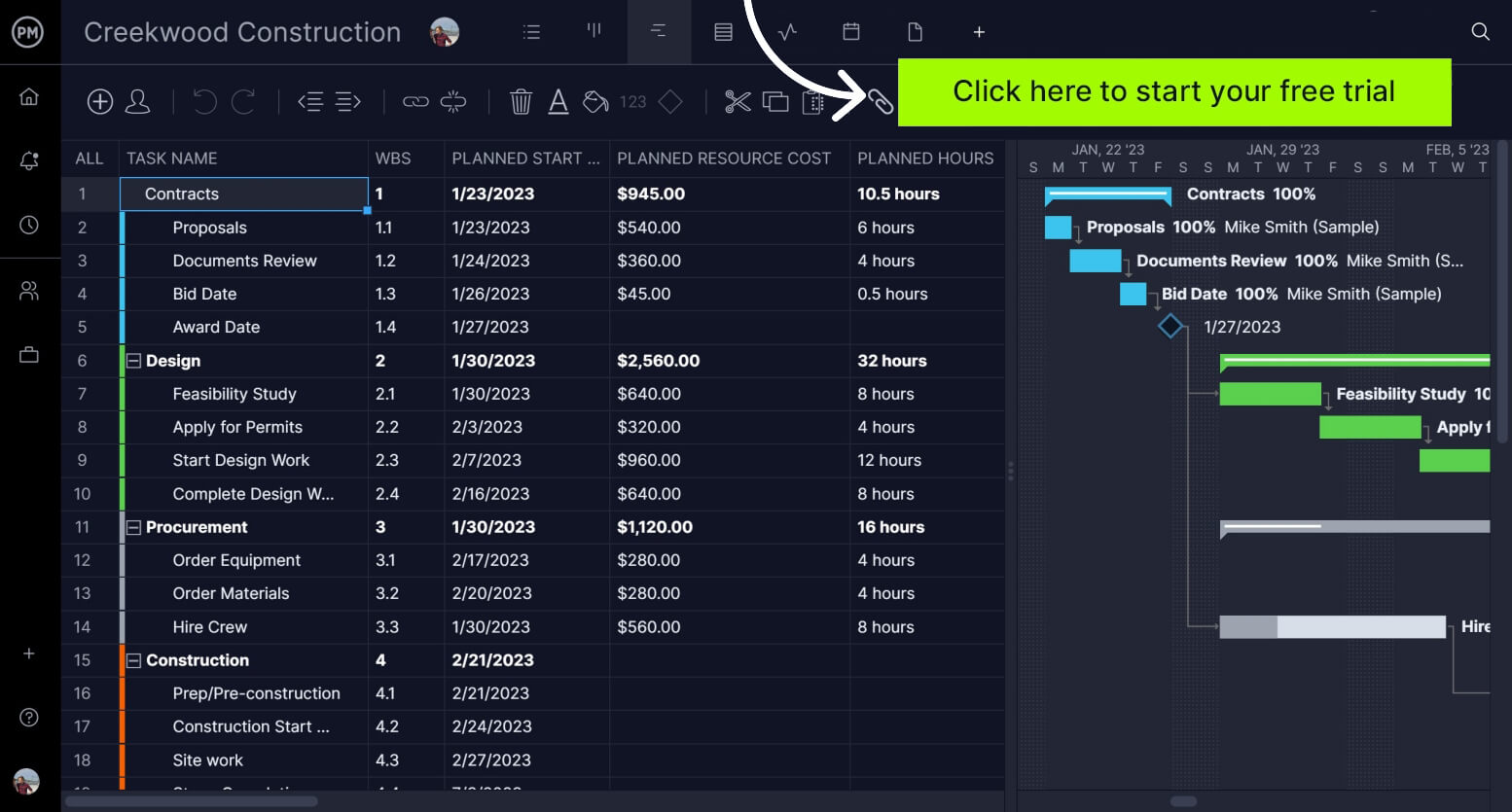
Before we dive deeper into the specifics of construction subcontracting, let’s start by defining what a subcontractor is and the key differences between a subcontractor and a contractor.
What Is a Subcontractor?
A subcontractor is a free agent employed on a job-by-job basis when their skills are needed to execute a construction project. Usually, these skills are specialized rather than generalized. Subcontractors are oftentimes self-employed and choose the jobs they wish to take, which can make it difficult to find work when they don’t already have a large network of clients.
Even then, if these clients don’t have projects to complete, there’s no demand for a subcontractor’s skills. One solution to this problem is finding general contractors to work for, rather than construction project owners.
Types of Construction Subcontractors
In construction projects, contractors will hire subcontractors who specialize in different aspects of the project. Here are some of the most common types of subcontractors.
- Site preparation subcontractor: This type of subcontractor helps general contractors and project owners prepare the job site for construction by leveling the ground, excavating the area for foundation and removing debris such as trees.
- Concrete subcontractor: As its name suggests, this type of subcontractor handles all the concrete-related tasks such as pouring the foundation, footings and building driveways and precast concrete structures.
- Electrical subcontractor: This construction subcontractor is one of the most important on the job site because they install electrical panels, generators, wiring and all the electrical framework of a building.
- Plumbing subcontractor: Plumbing subcontractors install all the needed elements to bring water in and out of a building, which consists of connecting the building to the water city lines and installing sewer lines and water pipes.
- HVAC contractor: Heating, ventilation and air conditioning (HVAC) subcontractors can execute all the work required for the installation of these systems.
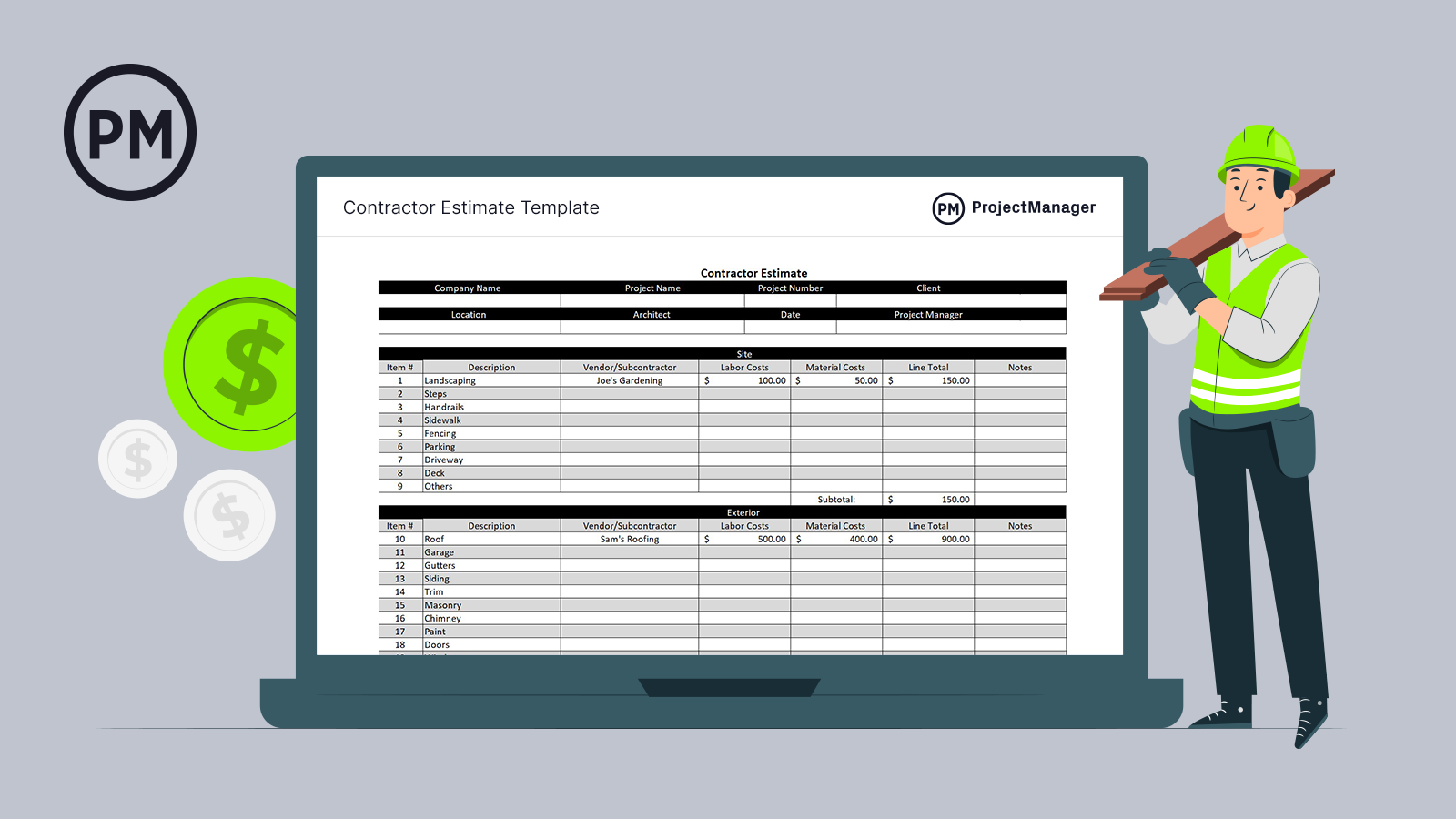
Get your free
Contractor Estimate Template
Use this free Contractor Estimate Template for Excel to manage your projects better.
General Contractor vs. Subcontractor
General contractors are individuals or organizations hired by owners to oversee the execution of a construction project. Subcontractors are then hired by general contractors to work on specific areas of construction. Subcontractors are hired and paid by the contractor.
The ideal relationship between contractors and subcontractors is a symbiotic one. Contractors need subcontractors for their skills and hard work, and subcontractors need a contractor’s large network of clients. This network ensures there’s always work to be done and allows subcontractors to focus on their role in the project, rather than finding projects in the first place.
While this relationship has proven to be effective over the years in the field of construction management, that doesn’t mean it’s always perfect. It’s common to see projects where the project owner, contractors and subcontractors argue due to a lack of planning and poorly defined subcontractor agreements. It’s essential to have solid contract administration guidelines and procedures in place so you can manage your contractors or subcontractors effectively.
Independent Contractor vs. Subcontractor
An independent contractor is someone who’s hired to perform work under contract, rather than being considered an employee or part of an organization. Independent contractors are responsible for complying with the terms that are written in construction contracts but have autonomy in terms of how they execute work.
Technically speaking, general contractors and subcontractors can be both considered independent contractors, as they’re hired to perform construction work through construction contracts. The difference between them is that the general contractor is hired directly by the project owner, while subcontractors are hired by the general contractor. They’re all independent entities with contractual relationships.

What Is Subcontractor Management?
When contractors hire subcontractors, they must practice subcontractor management to keep projects running smoothly. This begins by identifying the project owner’s needs and choosing quality subcontractors accordingly. Creating the criteria we mentioned previously can be part of this process.
Once contractors hire subcontractors, they must fill them in on expectations and employer policies, which is done by creating a subcontractor agreement. This construction document establishes communication and ensures everyone is on the same page.
Subcontractor Agreement
A subcontractor agreement is a document that specifies the details of the contractual relationship between a general contractor and a subcontractor. The structure of a subcontractor agreement might vary between projects, but generally, a subcontracting agreement should include the responsibilities of both parties, a scope of work describing what’s expected from the subcontractor, a description of the job site, due dates, insurance considerations and payment terms. Luckily, there are plenty of subcontractor agreement templates available online so you don’t have to write one from scratch.
When everyone is on the same page, the bulk of subcontractor management begins. The contractor must constantly monitor subcontractors and the status of the project to be sure everything is running smoothly and subcontractors are meeting expectations. Subcontractors must also make sure that work conditions and communication remain top-notch.
Ideally, subcontractors make life easier for contractors and improve the quality of the results, but there are construction management risks that come along with using them.
Subcontractor Risk
Subcontractors represent contractors. When they complete quality work, it reflects positively on the contractor. But this goes both ways. Because subcontractors are autonomous parties, bringing them onto a project is a risk. A few examples of this include subcontractors showing up late to a job, not showing up at all, completing unsatisfactory work or acting unprofessionally. If this happens, it can be difficult for contractors to fire subcontractors, depending on the terms of their contract.
If contractors continue to hire subcontractors, what steps are they taking to protect themselves? Two good ways for contractors to protect themselves are being selective when hiring subcontractors and practicing good subcontractor management with daily construction reports.
Contractor Estimate Template
Subcontractors need to estimate costs accurately so they can present competitive bids that are still profitable for their business. This contractor estimate template helps you gather all the costs of a project so you can create realistic and accurate project estimates.
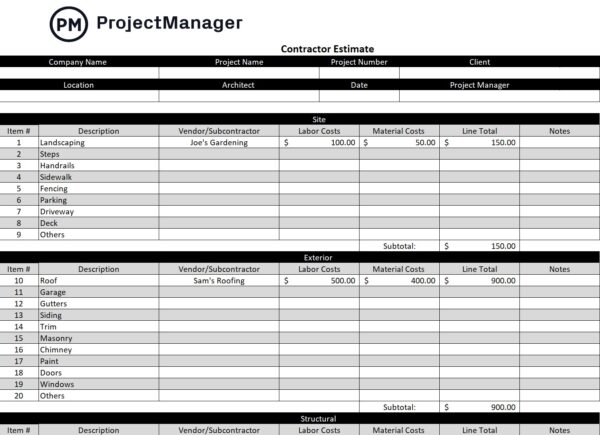
We offer a variety of free construction project management templates for Excel you can use to manage all aspects of your project.
Subcontracting Best Practices
Almost all construction projects use subcontractors. In fact, subcontractors do the majority of the labor. Using subcontractors can be extremely advantageous, but it necessitates skilled subcontractor management to avoid organizational issues and lapses in communication.
1. Keep Documents Organized
Hiring and managing subcontractors means lots of incurred paperwork. This begins with the construction contracts subcontractors agree to and extends to timesheets, expense records, safety standards and many other construction management documents. Because there are so many documents, they need to be found with ease.
2. Create and Share Schedules
Communication is one of the most crucial aspects of stakeholder management. This starts by creating and sharing a project schedule with the entire team. Because subcontractors will be most involved in the project, they should be able to see the big picture, rather than only knowing the due dates for individual tasks.
3. Assign Tasks Clearly
Throughout construction projects, tasks will crop up and need to be assigned to subcontractors. When this is the case, contractors should use a purposeful method for creating, assigning, tracking and communicating about tasks. Relying solely on conversations or informal documentation is a recipe for miscommunication and, ultimately, incomplete tasks.
4. Focus on Quality Communication
Contractors and subcontractors must be in constant communication throughout the lifecycle of the project. This is the only way to guarantee everyone is collaborating effectively. Contractors, in particular, need a system for these communications. Contractors are managing multiple subcontractors, often working on different projects, at the same time. When this is the case, casual communication won’t cut it. Instead, document communication and make sure everyone can access the information afterward.
ProjectManager Is Ideal for Contractors and Subcontractors
As you can see, successful subcontracting comes down to creating systems and ensuring everyone abides by the same processes. Otherwise, monitoring projects and making adjustments is inconsistent and creates confusion. Using construction project management software allows general contractors and subcontractors to plan how they’re going to execute a project and provides a platform where both parties can keep track of their tasks, budgets and timelines.
ProjectManager is user-friendly construction project management software that can be accessed from job sites or anywhere else you get work done. With our software, all subcontractors can view information, make updates and communicate with contractors on the go.
Use Gantt Charts to Plan and Schedule Construction Projects
Successfully managing subcontractors requires a project management solution that puts all the tools you need in one place. With our Gantt charts, construction project managers and general contractors can create timelines that lay out their entire project in one view. Create milestones, link dependencies and give your team a window into the project’s progress.
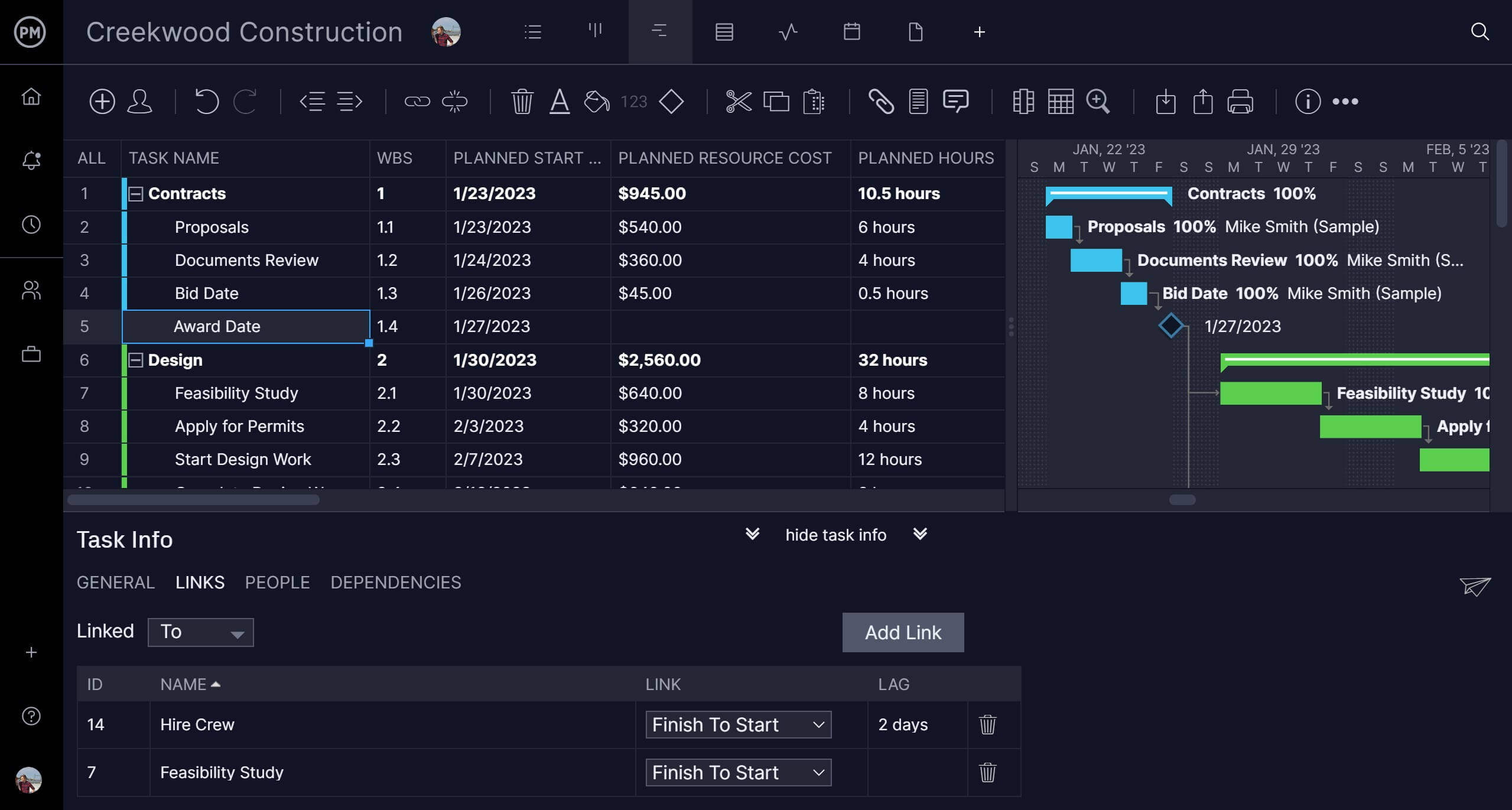
Track Progress In Real-Time With Dashboards and Reports
ProjectManager allows you to see all project details and check project status from one real-time dashboard that can be customized to a contractor’s liking. Check task progress, key metrics, upcoming deadlines and more. Then, create project reports in seconds that can be shared with the entire team.
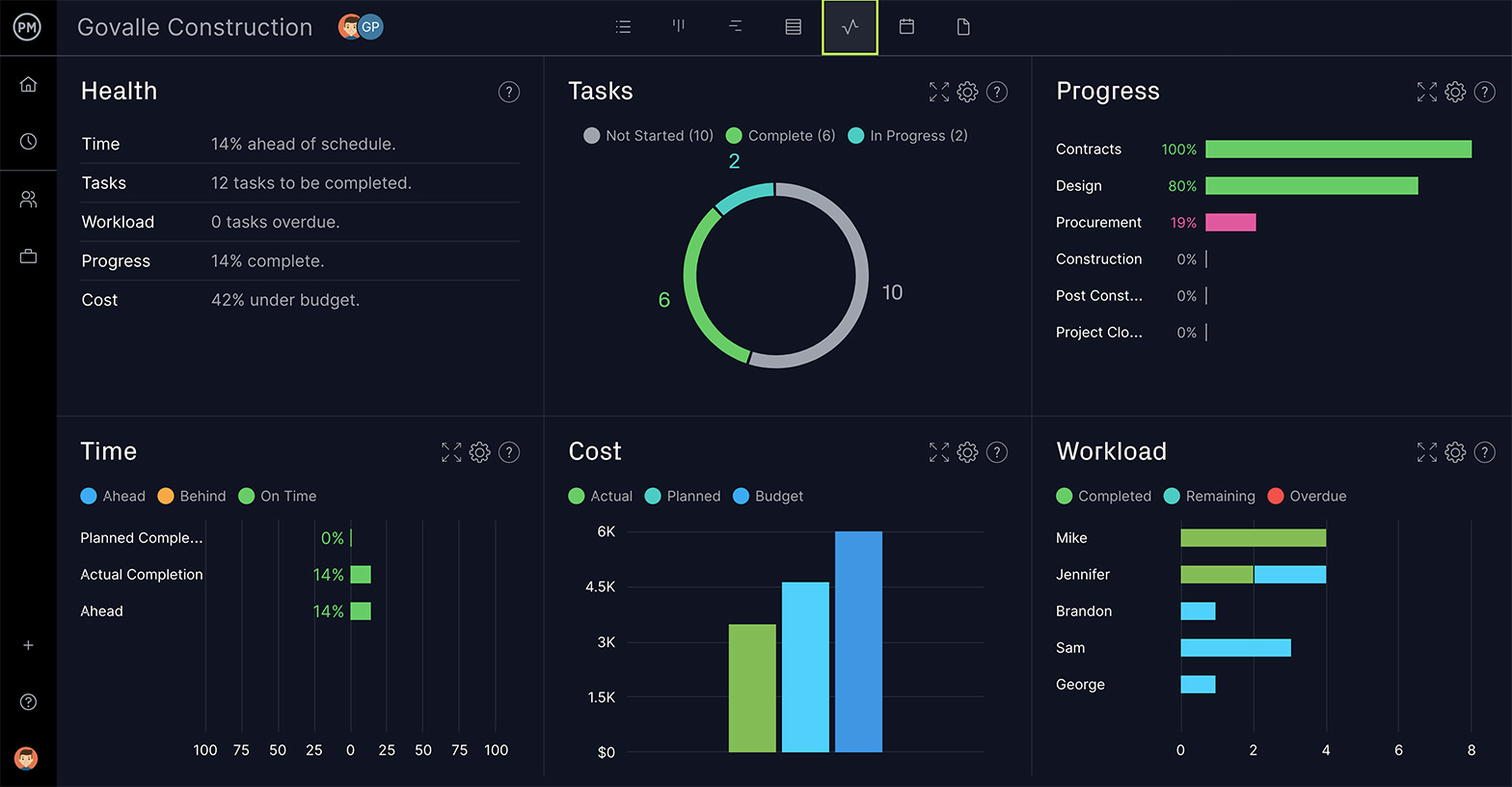
Related Content
- 10 Key Construction Job Titles: Overview & Salary
- Construction Project Manager Job Description (with Free Example!)
- Site Engineer Job Description (Free Copy & Paste Example)
- What Is a General Contractor In Construction? Role & Responsibilities
ProjectManager is online project management software that has the tools you need for subcontractor management. Our features make planning, monitoring and reporting on your project more efficient and effective. Try ProjectManager for free with this 30-day trial offer.

